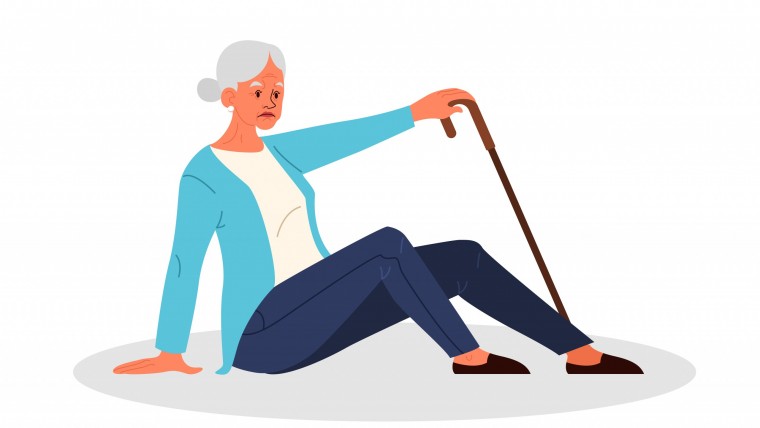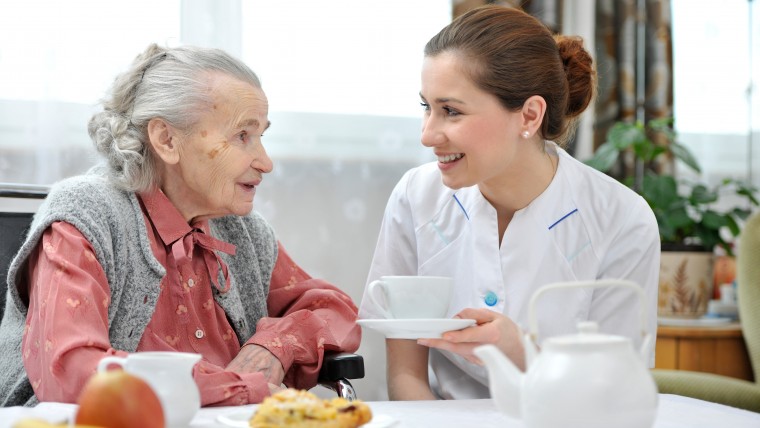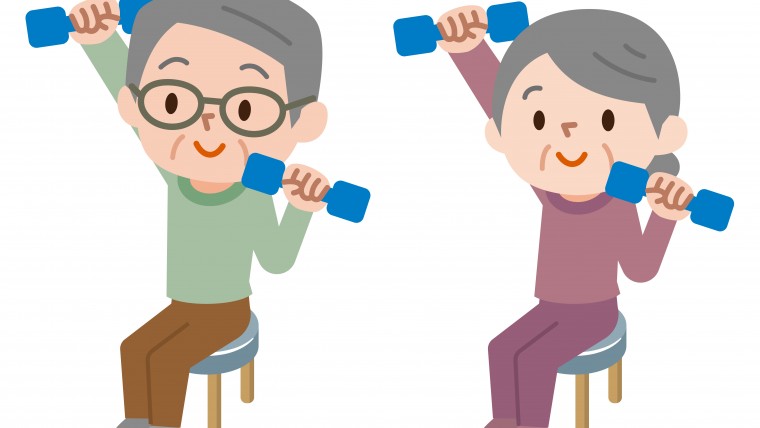“It’s undeniable that the more nurses and care attendants there are, the better the quality of care will be in seniors’ living environments,” says Philippe Voyer, an expert in geriatric nursing care and professor in the Nursing Sciences Faculty of Laval University. “Studies have very clearly demonstrated that a higher number of nurses is associated to residents preserving their autonomy and to a lower mortality rate.”
The minimum ratios in long-term care homes (CHSLDs)
There is currently no legal requirement regarding staff-to-resident ratios in long-term care homes (known in Quebec under the French initials CHSLD). However, there is an established standard that varies according to the shift (day, evening, night).
A nurse could, for instance, have the following patient loads:
- Day: 32 residents
- Evening: 75 to 96 residents
- Night: up to 100 residents
Desired minimum ratios
Professor Voyer would like the maximum threshold for a head nurse to be lowered to 25–32 residents during the day shift, 50–64 in the evening and 75–96 overnight.
He also suggests having ratios for nursing assistants and care attendants.
| Table 1 • Proposed Ratios | |||
| Positionn | Day | Evening | Night |
| Head nurse | 1 per 25–32 residents | 1 per 50-64 residents | 1 per 75-96 residents |
| Nursing assistant | 1 per 25-32 residents | 1 per 25-32 residents | 1 per 32-40 residents |
| Care attendant | 1 per 6-7 residents | 1 per 10-15 residents | 1 per 32-50 residents |
Source : https://www.msss.gouv.qc.ca/professionnels/documents/forum-chsld/Presentation_Philippe_Voyer.pptx
Current situation of nurse-to-resident ratios in retirement homes
Minimum staffing thresholds by category of retirement home:
The regulation respecting the certification of private seniors’ residence requires minimum staff thresholds in the four following categories of private retirement homes (RH):
- RH with basic services
- RH with basic services and medication distribution
- RH with personal assistance services and the administration of medication
- RH with nursing care
Depending on their size, the four RH categories are subject to different requirements:
- RHs offering basic services and those also offering medication distribution do not require any healthcare professionals, only supervisors, volunteers, supervising lessees or residents.
- RHs with 10 to 99 units that offer personal assistance services and the administration of medication require that a care attendant be present.
- RHs of 200 units or more that offer nursing care require four care attendants, but are not required to have a nurse.
Table 2. Minimum Thresholds for Care Attendants, According to Current RH Categories
| RH Category | Number of Units | Requirements at the RH |
|---|---|---|
| Category 1 RH with basic services |
49 units or less | 1 supervisor, volunteer, supervising lessee or resident* |
| 50–99 units | 1 supervisor, volunteer, supervising lessee or resident* | |
| 100–199 units | 1 supervisor or 2 volunteers, supervising lessees or residents* | |
| 200 units or more | 2 supervisors or 3 volunteers, supervising lessees or residents* | |
| Category 2 RH with basic services and medication distribution |
9 units or less | 1 supervisor* |
| 10–199 units | 1 supervisor* | |
| 200 units or more | 2 supervisors* | |
| Category 3 RH with personal assistance services and administration of medication |
9 units or less | 1 supervisor* |
| 10–99 units | 1 care attendant | |
| 100–199 units | 1 supervisor* and 1 care attendant | |
| 200 units or more | 2 supervisors* and 1 care attendant | |
| Category 4 RH with nursing care |
49 units or less | 1 care attendant |
| 50–99 units | 2 care attendants | |
| 100–199 units | 3 care attendants | |
| 200 units or more | 4 care attendants |
Source : https://www.msss.gouv.qc.ca/ministere/salle-de-presse/communique-1535/
In RHs, it is not required to have a night nurse on site in any of the four RH categories
“There is no requirement to hire a certified nurse, but if we don’t, there is a reputational risk,” explains the nursing care manager of a large RH.
In the daytime, for a Category 4 RH with nursing care, there obviously needs to be a graduate nurse to provide the nursing care. If the RH doesn’t have a nurse, a nursing assistant can dispense some of the care, but only within the limits set out by professional ethics.
Who can do what in the event of an accident or incident in an RH?
It’s important to know that a care attendant cannot assess a situation, for instance, a fall. If an incident or accident occurs, attendants have no choice but to call 811, where a trained nurse can tell them what to do.
Nursing assistants can assess a situation, but it must then be reassessed as soon as possible by a graduate nurse.
Source: Ordre des infirmiers et infirmières du Québec
In conclusion
Establishing clear standards for nurse-resident ratios
A law on the minimum allowable thresholds would help ensure the safety of vulnerable older people and standardize the management of health establishments—both public and private.
Lack of staff is the main issue
With the current staff shortage, managers of private RHs and other public establishments have considerable difficulty maintaining minimum ratios, as explained in this article (French only): https://lenord-cotier.com/2021/03/24/de-nouveaux-malgaches-pour-la-residence-des-batisseurs/
NB: Information on care staff ratios in RHs and CHSLDs is very hard to find on the Quebec ministry of health website and seems to be unclear to everyone.
Need help?
Contact a residence advisor to help you in your search for a residence
844 422-2555
Service free of charge for beneficiaries
Member of ACHQ
Need help?
Contact a qualified residence advisor for help with your search and accompany you until the signing of your lease for FREE.
Our assistance service for the elderly is FREE*
844 422-2555
* Our residence advisors are paid by the network of private residences in Quebec certified by the Ministry of Health and Social Services.



